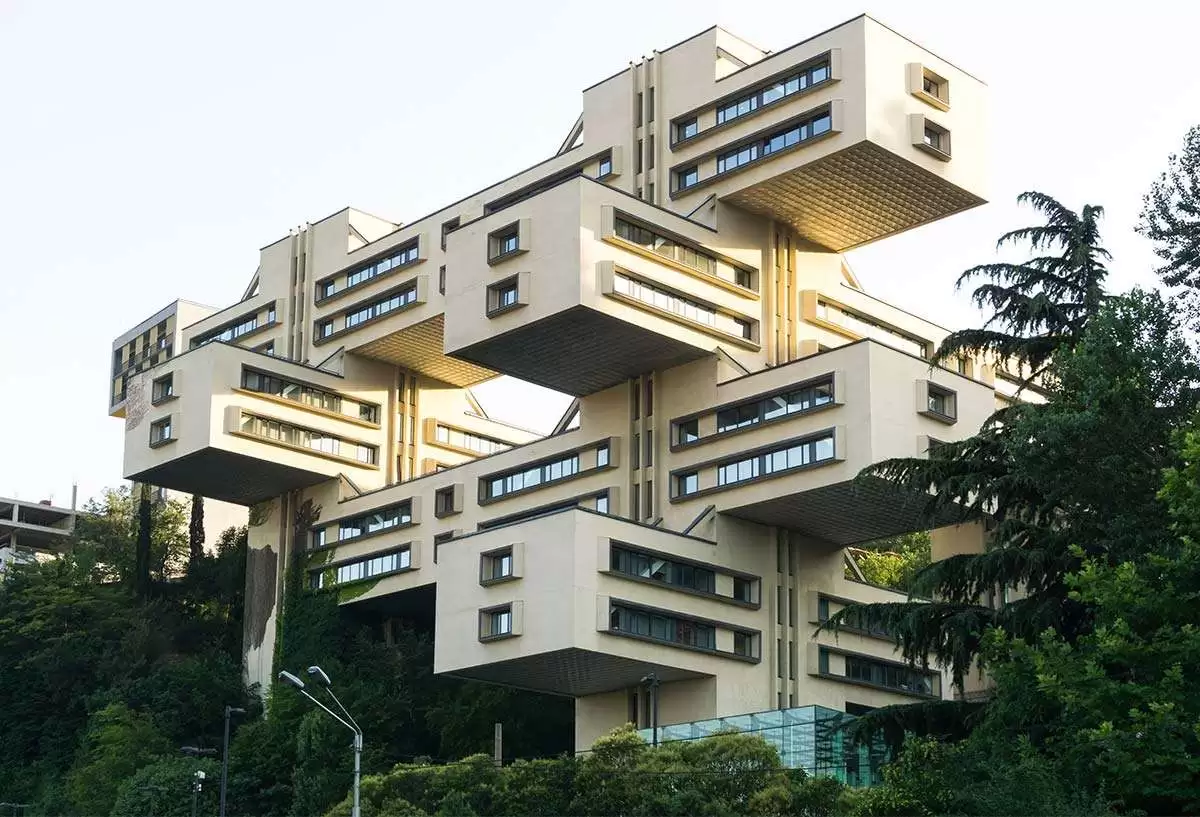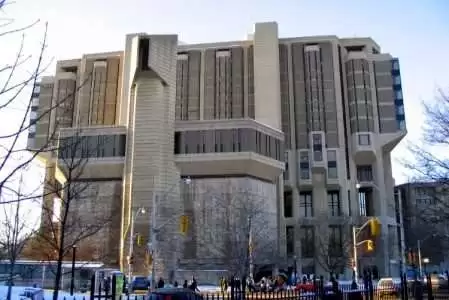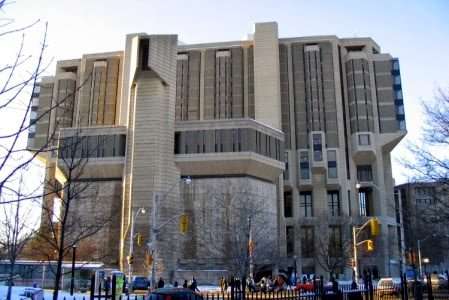Brutalist architecture has had a profound impact on the way it designs and shapes urban landscapes.
This school of architecture dates back to the 1950s and 1960s and represents a radical departure from the streamlined designs of the previous generation.
By exploring the history, identifying key elements, and examining some notable examples of brutalist architecture,
This article will reveal how this unique architectural style has influenced many of our cities today.

Definition of brutalist architecture
Brutalism is an architectural style characterized by the use of simple,
blocky geometric shapes and the use of concrete as the primary material.
It appeared in the 1950s, following the modernist movement, and was characterized by a heavy,
rigorous aesthetic and the dominance of raw concrete.
Other decorative forms of concrete are sometimes used,
for example, the term “béton brut” (meaning “rough concrete” in French)
It is sometimes used to refer to a particular type of exposed concrete that contains a large concentration of particulate matter.
The term “brutalism” is derived from the French “béton brut”, which means “raw concrete”.
It is an approach that emphasizes the raw materials of concrete and often celebrates the unfinished nature of its structures.
Brutalist architecture is typically characterized by a style of hard, sharp forms that are often jagged, unfinished, and monolithic.
Buildings designed in this style often appear to be made of huge solid blocks of concrete without any hint of detail or ornamentation.
Brutalist designs are often seen as a revolt against the soft, fluid forms of modernist architecture and a return to simpler, more primitive forms.
This school of thought is credited with providing a sense of strength and permanence to the structures they design.
Brutalist buildings are also seen as fortress-like structures and can effectively express a strong sense of power and order.
Brutalism is an architectural movement that developed from the 1950s to the early 1970s and became a controversial topic in architectural circles.
Although primarily associated with concrete, Brutalism embraces different shapes and materials used to evoke the concept of permanence and history.
The style is characterized by its use of repetitive shapes, bold geometry, and unadorned surfaces.
It often results in a stunning and stunning visual result.
While some criticize Brutalism for its lack of refinement and decorum, others admire its strong and uncompromising aesthetic.

History of Brutalist architecture
The history of brutalist architecture is closely linked to the modernist movement of the 1950s and 1960s.
Brutalism is an architectural style largely inspired by the work of the Swiss-French architect Le Corbusier.
The term “brutalism” was first coined in 1953 by architectural critic Rainer Banham,
who used it to describe the neo-modern style.
Brutalism pervaded Le Corbusier’s post-World War II designs and became known for their uncompromising,
often ruthless aesthetic qualities.
Brutalist architecture is characterized by its use of large, solid, massed forms,
often made of concrete or stone, with little or no ornamentation or ornamentation.
It is also known for its angular lines and sculptural forms, which mimic natural elements such as mountains and rocks.
The exterior of buildings is often characterized by strong geometric shapes and straight lines inspired by the Industrial Revolution.
Brutalism is also closely associated with the modernist movement,
which sought to create a more functional, efficient, and aesthetic working and living environment.
Many of the architects associated with the modernist movement, such as Ludwig Mies Van Der Rohe, Le Corbusier,
and Walter Gropius, continued to
in creating some of the most famous examples of brutalist architecture in the world.
Although it was popular in the 1950s and 1960s, brutalism fell out of fashion in the 1970s.
As people started to appreciate more classic and decorative styles.
However, in recent years, there has been a resurgence of interest in Brutalism,
as many people have begun to recognize the beauty and power of its bold shapes and geometric shapes.
In some cities, such as Lund, there was pressure to preserve Brutalist buildings,
which are now seen as architectural masterpieces.
Wahshio has been a powerful force in the world of architecture for nearly a century,
influencing the shapes and structures of some of the world’s most iconic buildings.

Brutalist architecture design elements
Brutalism has seen a resurgence in popularity in recent years,
leading to a new appreciation for its bold and cool design elements.
So what makes brutalist architecture so unique?
It all starts with a focus on raw concrete with its distinctive surfaces and appearances.
One of the signature elements of brutalist architecture is its interconnectedness,
both in terms of aesthetic form and how its form can be adapted to be used in different ways.
Brutalist architecture is often characterized by its apparent lack of traditional ornamentation
and reliance on exposed concrete and unfinished raw materials.
This emphasis on rough surfaces, combined with its lack of ornamentation, creates a sense of weight and containment.
This is reflected in his angular, brutal forms and his use of massive, exposed concrete walls and floors,
which often incorporate geometric patterns or textural details.
The large angular forms of Brutalist architecture consist of modular elements that can be rearranged,
extended or modified to create the desired shape.
This ability to manipulate a single form also allows Brutalism to be used in different ways,
from creating a castle-like presence to introducing a sense of openness and space.
The large, plump shapes, which can be arranged in different configurations depending on the desired outcome,
create an imposing and engaging visual spectacle.
Brutalism also often includes repetitive elements and patterns, which helps create a sense of rhythm and unity.
The emphasis on uniformity and repetition can also be seen in the repetition of concrete walls, columns, and window treatments.
Or even using the same material that is repeated in different colors or finishes throughout the building.
This repetition of similar shapes and colors creates an overall sense of visual coherence and balance.
Brutalist architecture can also be seen as environmentally conscious, using sustainable materials and building techniques.
Exposed concrete walls and floors help organize and insulate the building, making it more energy efficient and reducing carbon emissions.
In addition, the modularity of the design allows for easy repair and maintenance, reducing its impact on the environment.

Notable examples of brutalist architecture
Brutalist architecture originated in the mid-20th century and is characterized by the heavy use of raw concrete,
simple geometric shapes, and a lack of decorative details.
These structural elements, combined with the buildings’ bold and powerful presence,
produce striking, monolithic structures that often become iconic landmarks.
While many of these designs were initially criticized, they became appreciated for their boldness and uniqueness.
Here are some notable examples of brutalist architecture.
The Hallidie Building in San Francisco is one of the earliest examples of Brutalist architecture.
Completed in 1968, it is an 18-storey modern apartment building with a distinctive U shape,
glass curtain walls and raw concrete framing.
It is famous for being the world’s first curtain-glass building,
constructed with an innovative construction technique that required less support.
The National Library of Belarus is an outstanding example of Brutalist architecture
Completed in 2006, this vast structure features a castle-like exterior of over 10,000 cubic meters of concrete.
Large columns and beams support a lightweight, glass-walled dome that houses the library’s main reading room.
The Balfron Tower in London is a 27-storey residential building, completed in 1967.
It features rough-textured concrete slabs, large windows, precast concrete balconies,
and a grand staircase suspended in the center of the building.
And Habitat 67 in Montreal is considered one of the most famous brutalist structures designed to solve urban housing problems.
Consisting of 354 identical prefabricated concrete boxes arranged in a honeycomb pattern,
Habitat 67 is a landmark of Montreal’s cityscape.
Boston City Hall is also one of the city’s most visible landmarks.
Completed in 1968, it is a massive, boxy building designed with a powerful three-story atrium that serves as the entrance to the building.
The entire building is made of poured-in-place concrete, giving it a cohesive, modern presence.

Brutalist architecture influence
Brutalist architecture has been a controversial move since its inception in the 1950s.
Its bold, angular, and unadorned design has been widely embraced and vilified,
but its influence on the world of architecture is undeniable.
From the iconic government and educational buildings of the 1950s and 1960s to the modern city housing that has sprung up in recent years,
Brutalist architecture left its mark on the built environment, continuing to challenge the traditional definition of beauty.
Brutalist architecture aims to celebrate the materiality of the built environment, and often favors concrete as its primary material.
It is this celebration of the raw, natural beauty of matter that has drawn such sustained criticism from the public.
While the style has been embraced by those who admire its modernist sensibilities,
the strong visual impact of brutalist buildings has been perceived negatively by many.
Despite its deliberate design, many citizens were put off by the harshness and absence of decoration.
However, in recent years, there has been a renewed interest in Brutalist architecture as people have begun to appreciate its raw,
utilitarian aesthetics.
This popularity saw more architects embrace the style, creating modern residences and other structures
Bold lines, exposed structures, and robust materials are used for brutal design.
At the same time, the influence of brutalist architecture on urban areas was significant,
as these structures became icons in many cities, inseparable from the visual identity of the city.
The towering concrete structures of government buildings,
universities and other public institutions have become an integral part of the visual language of the city.
In conclusion, the influence of Brutalist architecture cannot be denied.
From its controversial beginnings to its modern emergence, the style has sparked controversy among critics and admirers alike.
Its influence can be seen in the built environment of many cities and the imagination of contemporary architects.
For more architectural news


 العربية
العربية